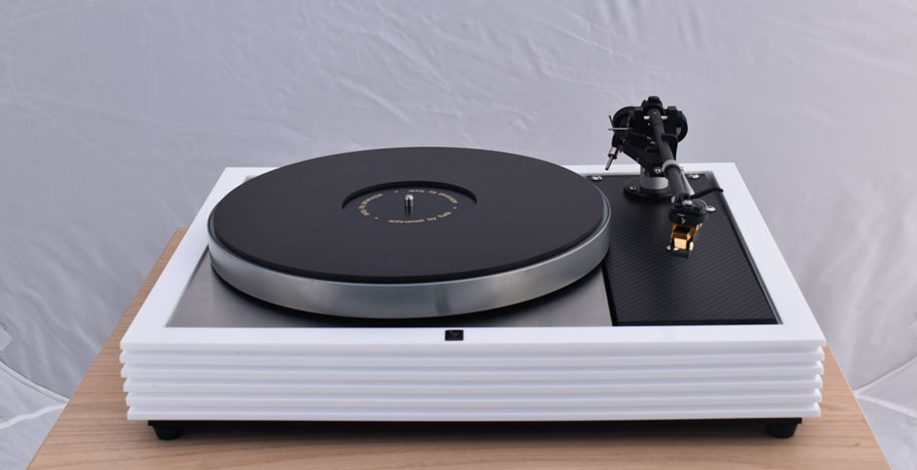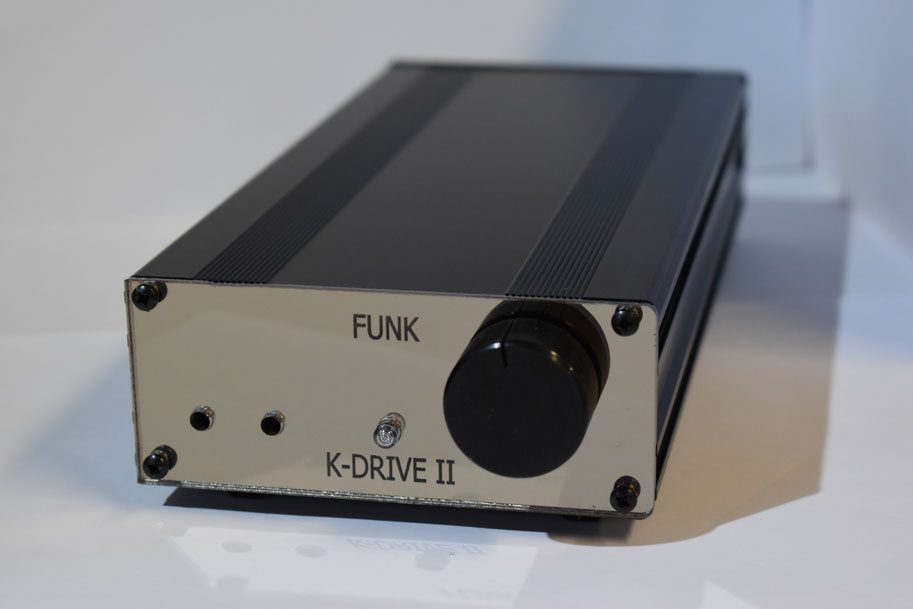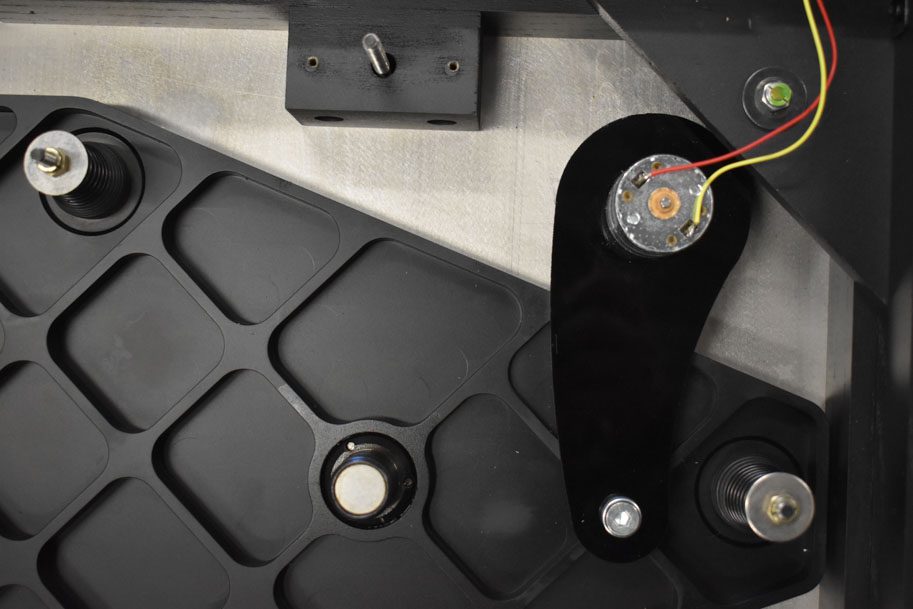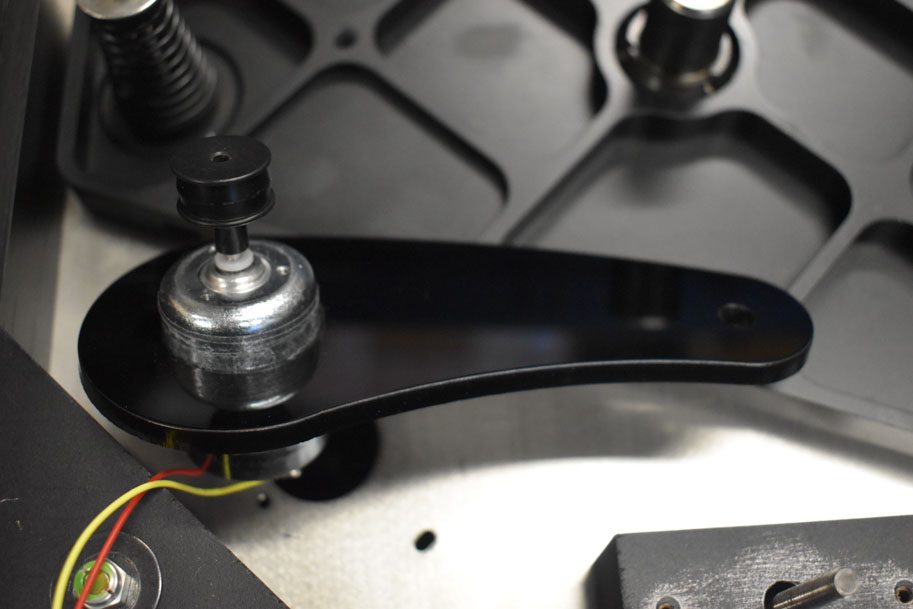
Some people simply can’t leave things alone. It doesn’t happen to anywhere near the same extent with amplifiers, but turntables seem to bring out the meddler in people who fancy they can hot-rod a tried and tested design. Rega’s Roy Gandy once told me that he’d lost count of the number of tone arms that the factory had repaired following after-market ‘improvement’ by third-party tweakers. Turntables, and in particular those with ready-fitted tonearms, are complex assemblies resulting from the deliberate – and we must hope informed – choices made by the designer. Change one item and the risk is that a carefully curated sonic balance is spoiled. It’s easy to change the sound by using, for example, a different material to form a key part, changing it for the better is a challenge several orders of magnitude greater.
Take the venerable LP12 turntable. Canny marketing has helped secure a place for the LP12 in audio folklore. True believers greet any criticism of it in much the same way as Disney fans might react if we suggested that Bambi is ugly. Coming up to five decades from launch and, Linn says, with some 100,000 sold, the LP12 has been the subject of multiple official design and materials changes by its maker, yet it remains a distinctive listen, setting it somewhat apart from more neutral alternatives. None of that takes away from Linn’s commercial achievement. The LP12 has one hell of a record, if you will excuse the pun, and it continues to sell strongly.

Even so, it seems a lot of people yearn for a less character-full presentation. They want to change the LP12 into something that looks the same, but sounds different. An eco-system of third-party suppliers has grown up to satisfy this desire, supplying a plethora of alternative LP12 parts from plinths and power supplies to motors, springs and arm boards. And now, right on cue as the 50th anniversary of the LP12 looms, physicist and enfant terrible of the audio industry, Arthur Khoubesserian, has launched a re-imagining of the LP12; not a mere fiddling around the edges, but an holistic transplant of technology and design intelligence in a package he calls 20/20. Straight away it’s possible to see what he wants us to understand by the name.
Drop-in
Also available for the Thorens TD150 and 160 – the Funk Firm 20/20 comprises a complete package of proprietary top plate, sub-chassis, suspension, motor and external power supply. Khoubesserian says it’s well within the abilities of almost all owners to remove their turntable’s original turntable bearing and transfer it to the 20/20’s sub-chassis. It’s then simply a case of lowering the entire assembly into the donor plinth and securing the fixing screws.
The 20/20’s sub-chassis hangs on the suspension, rather than compressing it. The three springs are arranged in the same geometry as the Thorens TD 150/160 and Linn turntables, but can be adjusted both from above, or from underneath if the turntable’s baseboard is removed. No dealer visit, jig or special tools are required; plastic knobs on ball races are simply tweaked by hand until the platter is level.
There are further significant design features. Mounting the motor top left, when a turntable is viewed from the front, means that the energy it exerts through the drive belt on the platter is at 90 degrees to the axis of the tonearm and stylus. The belt behaves as a 12db low pass filter with a cutoff at around 500Hz, so passes to the platter and stylus any low-frequency noise picked up by the plinth and top plate, or generated by the motor. The arm and stylus are vibrated from side to side by this unwanted energy giving rise to a characteristic bloom in the sound, usually described as richness or warmth. Moving the motor to the front left corner means vibrations are pushing against the axis of the rigid cantilever and arm tube where they do much less sonic harm.

Khoubesserian also favours a more advanced way of managing, or vectoring, rotational energies. Which is why Funk Firm’s 20/20 uses a single motor mounted, not on the top plate a la Thorens and Linn, but on the sub-chassis, and working in concert with two slave pulleys. Rather than pulling the platter in one direction, the belt drives it at three equidistant points around its circumference, centring the bearing and allowing it to operate with an even oil gap both for sonic stability and longer service life. Crucially, arm board yaw and stylus scrub, reduced by a front mounted motor, are now completely eliminated. The suspension does not need to be partially shorted by ‘dressing’ the tonearm lead, and so it is now able to provide more effective isolation from energy in the room and supporting furniture.
Linn and many of the after-market suppliers in the LP12 ecosystem realised that the sub-chassis plays a key role in the sonic end result, and so more robust alternatives to the basic pressed steel item have been devised, mostly aluminium, some machined from billet, and some bolt-together assemblies. The 20/20 sub-chassis seeks to improve on all of these by being more rigid still, made of carbon fibre layers with a Young’s modulus – stiffness to those of us without engineering degrees – greater than that of aluminium.

Mounting the motor on the sub-chassis, not the top plate, allows it to enjoy the same degree of sprung isolation as the platter and tonearm, no longer able to absorb external low frequency energy and transfer it through the belt. But this creates another challenge. “If you are going to do that,” says Khoubesserian, “you’d better find a damn good motor, otherwise any vibration generated by motor cogging or brush noise could be transmitted straight to the bearing and arm board via the sub-chassis.” He won’t name his supplier, but the skew-wound iron-less rotor inside the 20/20’s DC K-Drive motor is certainly uncannily quiet and vibration-free. He claims that no measurable motor noise or vibration reaches the bearing or arm.
Art Deco
Funk Firm sent an evaluation sample of a 20/20 LP12 – actually Khoubesserian’s development mule. It arrived wearing Funk Firm’s optional and distinctly art-deco ROK 2 plinth in black and white acrylic. Other colourways are available. The plinth is designed to be dissipative, adding further to the 20/20’s comparative immunity to excitation by external energy. The carbon fibre armboard of the review unit was topped with a Funk Firm FX3 tone arm, the firm’s Houdini cartridge isolator and an AT VM760SCL moving magnet cartridge. A Funk Firm Achromat topped the standard Linn platter, thus completing what Khoubesserian calls the Funk Firm Isolation Bubble. Here the cartridge operates in an environment substantially free from energy reflected either from below in the platter, or from above through the arm. It’s a radical concept right enough, and once heard, it’s hard to go back.
The review 20/20 LP12 was connected to a PS Audio Stellar phono stage with the output fed through an IcOn 4PRO Balanced passive line stage and a Bryston 4B Cubed power amplifier to PMC MB2se speakers. Right from the off, the overwhelming impression it gave was of brisk clarity; a presentation laden with detail, solid to the point of being semi-tactile, judged by multiple listeners to be easily on par with that achieved by well-regarded contemporary alternatives. The absence of coloration allowed more of the totality of the tonal and textural information buried within recordings to shine forth, not just at the low end, but up through the audio band where female voices were heard with a more natural purity, less homogenised, their distinctive individual characters more apparent. Power and richness were present when recordings called for it, but otherwise the 20/20 left the lid on the syrup bottle. Also notable was the 20/20’s pitch stability, again, right up there with contemporary alternatives, rock-like even on sustained piano notes, the reproduction of which cruelly shows up turntables that are, let us say, prone to a rather loose interpretation of recorded actuality.

Khoubesserian’s theory promises phase accuracy, and so I turned to Siesta, the 1987 soundtrack to the film of the same name. Written and recorded by Marcus Miller and, partly, Miles Davis, it provides a rare treat, not only for fans of Davis who, as others have noted, seems to have re-discovered his lyrical mojo for the recording, but also for audiophiles for whom the recording quality achieved by Miller while wearing his producer’s hat is simply outstanding. In particular, the dense spatial information provides a stiff test of phase accuracy for any turntable. The 20/20 passed it with ease, delivering depth perception and location specificity of the highest order, validating Khoubesserian’s claim to have slayed the dragon of phase corruption.
A matter of timing
Some audio industry marketeers like to make much of timing, but it is only one of the four key pillars that support live music. Dynamic power, dynamic agility and tonal detail also need to be present and correct if our audio is to approach how live music sounds. And if we want to claim that a component times well, it must be able to present each recorded music event, right down to single note level, in its entirety. If a high noise floor or coloration means we are unable to discern their very beginning and their end, or notes are delayed by phase errors or pitch instability, we cannot with a straight face say the timing is ‘good’. The sonic result might be fun, enjoyable even, but cannot be described as an accurate transcription of what the musicians did at the recording session, and what can be heard on the master tape.
Due to its phase accuracy, pitch stability, low noise floor and lack of colouration, the 20/20 provides a master-class in what good timing really sounds like, allowing listeners to discern when a band is simply going through the gears, or, with whip-crack interplay and subtle changes of position in relation to the time signature, is musically on fire. Mike Valentine’s direct cut recording A Tribute to Ella Fitzgerald, performed by Clare Teal with the Syd Lawrence Orchestra, has rarely sounded so alive and on its toes than it did via the 20/20.
In conclusion, the 20/20 showed that Khoubesserian’s impressively worked theories on isolation, vectoring and motor positioning really do enable a venerable design to transcend the limitations imposed by its geometry.
If The Funk Firm can successfully productionise the 20/20 package and maintain a rigorous grip on quality, then it represents an enticing prospect for that cohort of Thorens TD150/160 and Linn LP12 owners who love the iconic looks of their vinyl rigs, but would rather like a different sound.
Price and contact details
- The Funk Firm 20/20 upgrades: £3,900
Manufacturer
The Funk Firm
+44(0)7846 789367
By Kevin Fiske
More articles from this authorRead Next From Review
See all
PrimaLuna EVO 100 phono preamplifier
- Apr 22, 2024

Reiki Audio SuperSwitch Master Pro + Servant Pro
- Mar 27, 2024

Melco Audio N1-S38 music server
- Mar 27, 2024











